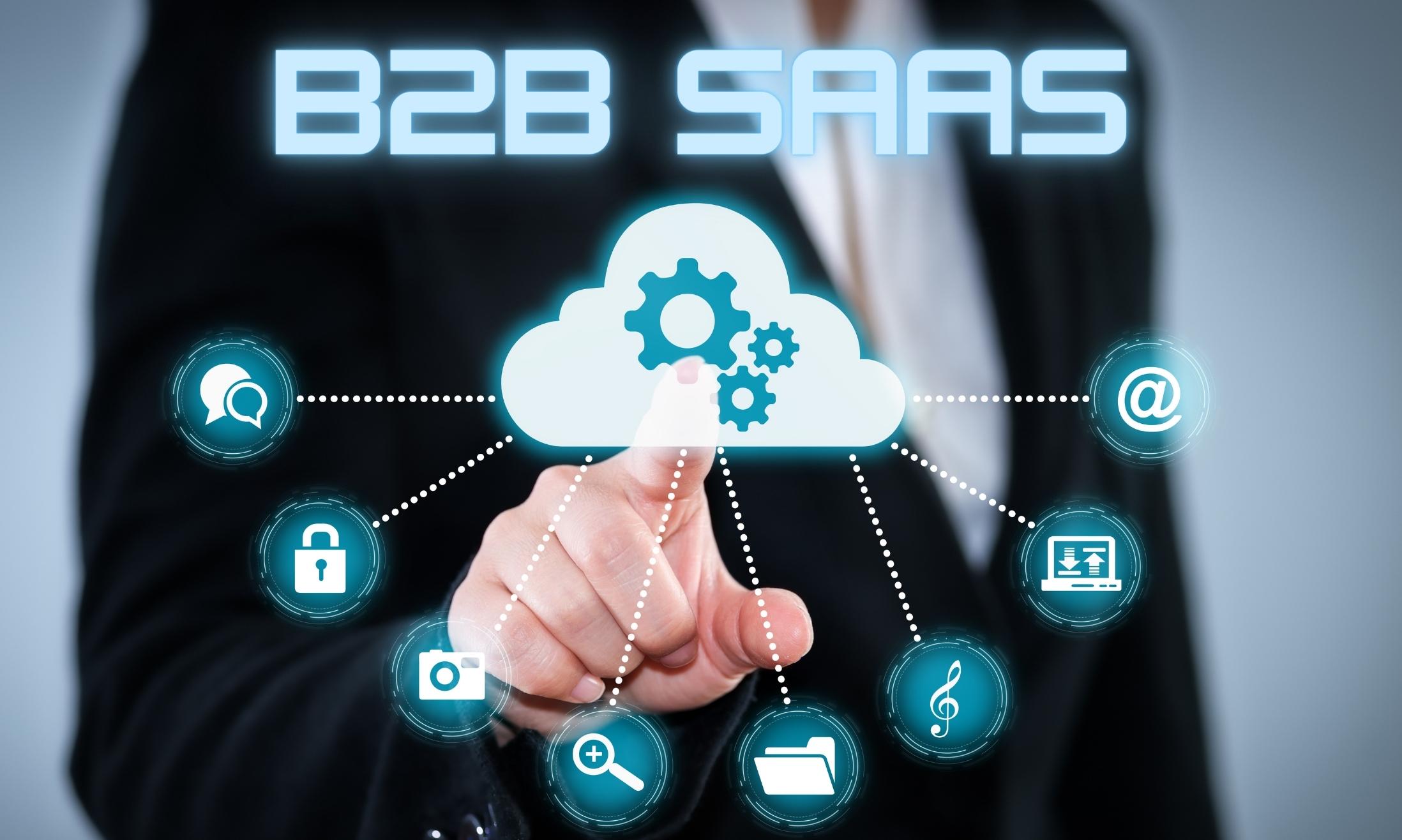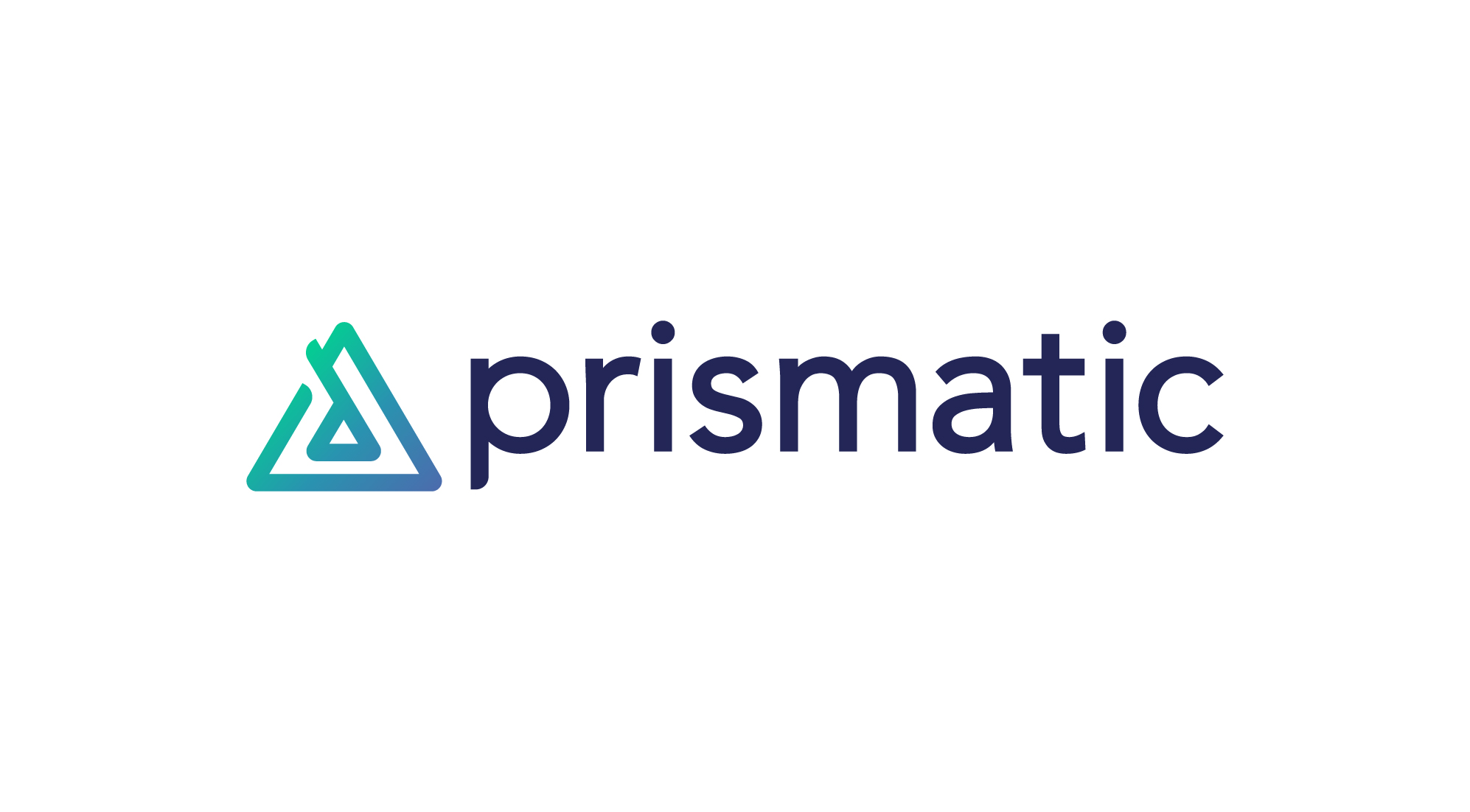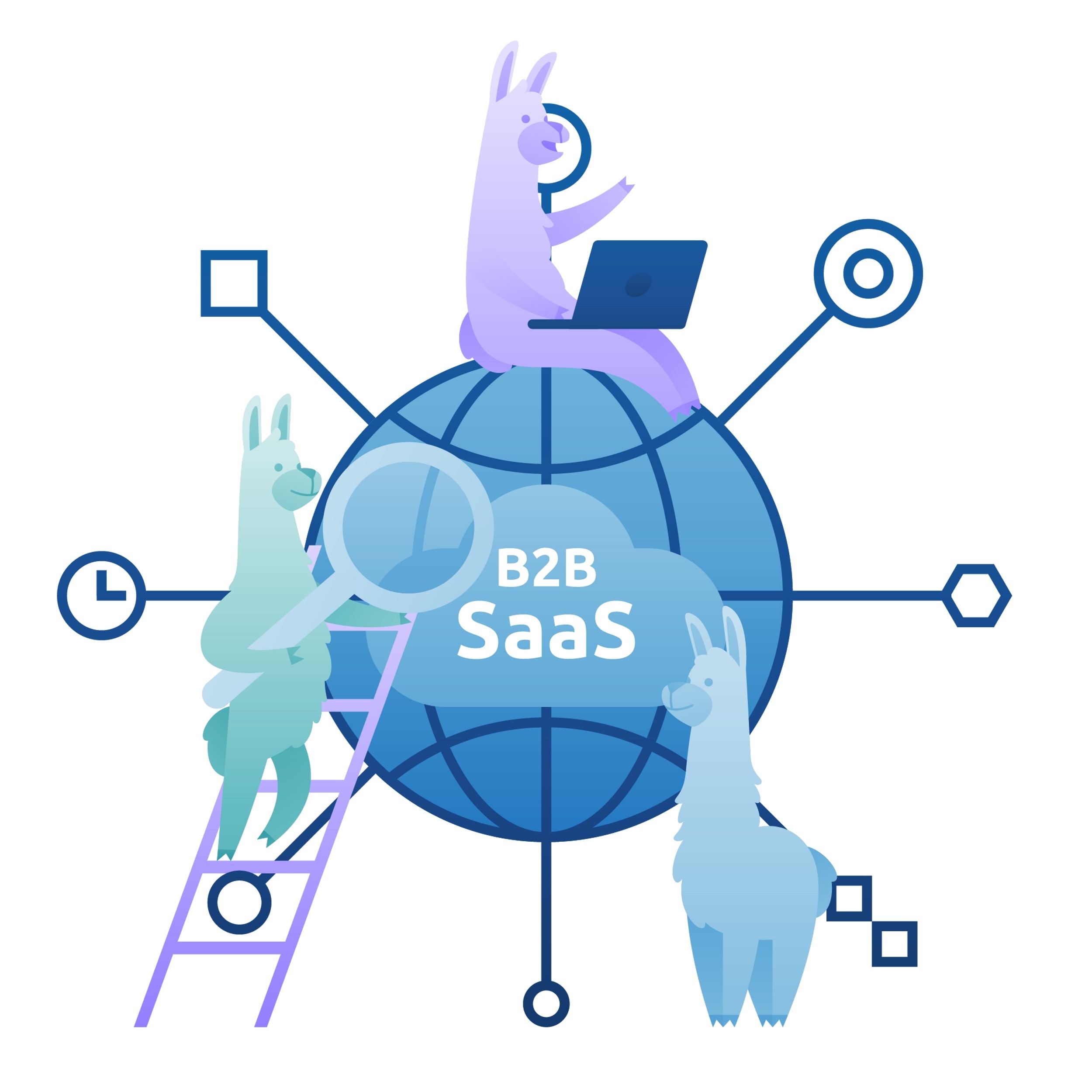Introduction
When it comes to selling B2B software as a service (SaaS) products, there are two predominant sales approaches: traditional B2B SaaS sales and the emerging product-led sales model. While both aim to drive revenue and acquire new customers, they differ significantly in their strategies and execution.
In traditional B2B SaaS sales, the sales team takes the lead by actively prospecting and engaging with potential customers. The process typically involves sales representatives reaching out to prospects, providing product demos, negotiating contracts, and closing deals. On the other hand, product-led sales centers around allowing the product itself to be the primary driver of sales. Instead of relying heavily on sales tactics, the focus shifts to providing a seamless customer experience and enabling users to try, adopt, and upgrade the product on their own.
This article aims to explore the key distinctions between product-led sales and traditional B2B SaaS sales, shedding light on their respective approaches to customer onboarding, sales cycle length, customer engagement and retention, sales team structure, pricing models, and metrics. By understanding the unique characteristics of each approach, businesses can make informed decisions about which sales model best aligns with their goals and target market.
Let’s dive into the differences and explore how product-led sales stands out from traditional B2B SaaS sales.
Definition of Product-Led Sales
Product-led sales, also known as product-led growth or PLG, is a sales methodology that prioritizes the product as the primary driver of customer acquisition and conversion. In this approach, the product itself is designed to provide a self-service experience that allows users to explore and understand its value without heavy reliance on sales representatives.
Product-led sales places a strong emphasis on building a product that is intuitive, user-friendly, and capable of delivering value from the moment a user starts using it. By allowing users to interact with the product before making a purchasing decision, product-led sales aims to build trust, showcase the value proposition, and drive conversions through the product experience itself.
This approach typically involves offering a freemium or trial version of the product, allowing users to experience its core features and functionalities. This enables potential customers to evaluate how the product can solve their pain points and whether it aligns with their needs and expectations.
Product-led sales focuses on providing a seamless onboarding experience to ensure that users can easily understand and use the product without the need for extensive training or support. The goal is to enable users to achieve the desired outcomes independently, reinforcing the value proposition and driving adoption.
While product-led sales does involve sales representatives to some extent, their role shifts from actively selling the product to providing assistance, guiding users in making the most out of the product, and identifying opportunities for upselling or cross-selling.
Overall, the key idea behind product-led sales is to allow the product to speak for itself, encouraging customers to adopt and upgrade based on their positive experience, rather than relying on traditional sales tactics to push the product forward.
Difference in Approach
The approach to sales differs significantly between product-led sales and traditional B2B SaaS sales. In traditional sales, the sales team takes a proactive approach to prospecting and engaging with potential customers, while product-led sales leverages the product itself to drive customer acquisition and conversion.
In traditional B2B SaaS sales, the sales team identifies and reaches out to potential leads, qualifying and nurturing them throughout the sales cycle. The process typically involves conducting product demos, providing personalized pitches, negotiating contracts, and ultimately closing deals. The sales team plays a central role in guiding the customer journey and driving the sales process forward.
In contrast, product-led sales focuses on designing a product experience that is intuitive, user-friendly, and capable of converting users into customers without extensive involvement from the sales team. Instead of relying on sales reps to actively sell the product, users are encouraged to explore, try, and adopt the product on their own. Through this self-service approach, product-led sales aims to build trust and showcase the value of the product primarily through the product experience itself.
The product-led approach emphasizes the availability of free trials or freemium versions of the product, allowing potential customers to test the product’s core functionality before committing to a purchase. By providing users with hands-on experience, product-led sales aims to build confidence in the product, increase adoption rates, and ultimately drive conversions.
Furthermore, product-led sales focuses on providing a smooth and seamless onboarding experience for users. The product is designed to be easy to use, with intuitive interfaces and helpful guidance that allows users to quickly understand how the product works and how it can solve their pain points. The goal is to enable users to achieve their desired outcomes independently, without the need for extensive training or support from the sales team.
Customer Onboarding
One major distinction between product-led sales and traditional B2B SaaS sales lies in the approach to customer onboarding. Customer onboarding refers to the process of guiding new customers to successfully adopt and integrate the product into their workflows, ultimately leading to their long-term success and satisfaction.
In traditional B2B SaaS sales, the onboarding process often involves a dedicated onboarding team or account manager who works closely with the customer to ensure a smooth transition and implementation of the product. The onboarding team provides personalized support, conducts training sessions, and assists in configuring the product to meet the specific needs of the customer.
On the other hand, in product-led sales, the focus is on providing a self-service onboarding experience that allows users to easily understand and start using the product on their own. The product itself is designed to be intuitive and user-friendly, minimizing the need for extensive training or guidance from a dedicated onboarding team.
Product-led sales employs various strategies to facilitate customer onboarding. This may include interactive tutorials, in-app help guides, tooltips, and prompts that guide users through the product’s features and functionalities. The goal is to empower users to get started quickly and achieve their desired outcomes without depending on external assistance.
Additionally, product-led sales often incorporates product usage analytics and data-driven onboarding strategies. By analyzing user behavior and engagement within the product, companies can gain insights into the onboarding process and identify potential areas for improvement. This allows for iterative enhancements to the onboarding experience, making it more streamlined and effective over time.
Overall, product-led sales aims to provide a seamless onboarding experience that allows users to independently discover and understand the value of the product. By minimizing the need for direct support and training, product-led sales enables customers to get up and running quickly, leading to faster adoption and an optimized customer onboarding journey.
Sales Cycle Length
The length of the sales cycle is another area where product-led sales and traditional B2B SaaS sales differ. The sales cycle refers to the time it takes from initial engagement with a prospect to closing the deal and converting them into a paying customer.
In traditional B2B SaaS sales, the sales cycle can be relatively longer. This is because the sales team takes a more proactive approach, which involves lead generation, nurturing, conducting product demos, negotiating contracts, and addressing any objections or concerns that may arise along the way. This process requires multiple touchpoints and interactions with the prospect, which can extend the overall sales cycle duration.
On the contrary, product-led sales focuses on reducing the sales cycle length by leveraging the self-service nature of the product experience. In the product-led approach, users are encouraged to try the product through free trials or freemium versions. This allows them to experience the product and understand its value without the need for extensive hand-holding from the sales team.
By offering a frictionless sign-up process and providing a seamless onboarding experience, product-led sales aims to expedite the conversion process. Potential customers can explore, evaluate, and adopt the product at their own pace, reducing the need for lengthy sales engagements. This self-selection process allows prospects to move quickly through the sales cycle, converting into paying customers based on their positive experience with the product.
The shorter sales cycle in product-led sales can have several benefits. It minimizes the risk of prospects losing interest or becoming overwhelmed during a prolonged sales process. Moreover, it enables companies to scale their customer acquisition efforts more efficiently, as the self-service approach allows them to cater to a larger volume of potential customers simultaneously.
However, it is important to note that the length of the sales cycle can vary depending on the complexity of the product, the target market, and the specific sales strategy employed. While product-led sales generally aims for a shorter sales cycle, certain B2B SaaS products may require a more consultative sales process that aligns with the customer’s specific needs and implementation requirements.
Customer Engagement and Retention
Customer engagement and retention play a crucial role in the success of any SaaS business. The approach to customer engagement and retention differs between product-led sales and traditional B2B SaaS sales, emphasizing the importance of a customer-centric approach.
In traditional B2B SaaS sales, the sales team plays a pivotal role in maintaining customer engagement and fostering long-term relationships. They actively reach out to customers, provide ongoing support and assistance, and act as a point of contact for any questions or concerns. The sales team’s goal is to ensure customer satisfaction, address any issues, and build a strong foundation for ongoing customer success.
In contrast, product-led sales focuses on enabling customers to engage with the product itself to drive engagement and retention. The product is designed to provide a seamless user experience that encourages customers to explore its features, derive value, and achieve their desired outcomes. By focusing on the product experience, companies can foster a sense of ownership and engagement among customers.
Customer engagement in product-led sales is often facilitated through in-app guides, user communities, and self-help resources that empower customers to find solutions to their questions and challenges independently. Companies pay attention to user behavior and usage analytics to gain insights into customer engagement levels and identify opportunities to further improve the product experience.
Furthermore, product-led sales places significant emphasis on customer satisfaction and retention. By delivering a high-quality product experience and constantly iterating based on user feedback, companies can enhance customer satisfaction levels and increase the likelihood of customer retention. The self-service model allows customers to continue benefiting from the product without requiring continuous engagement from sales representatives.
By focusing on customer engagement and retention, companies practicing product-led sales can benefit from increased customer lifetime value and advocacy. When customers feel empowered and satisfied with the product experience, they are more likely to renew their subscriptions, upgrade to higher-tier plans, and recommend the product to others.
However, it’s important to note that customer engagement and retention strategies may differ depending on the target market, the specific nature of the product, and the overall customer experience goals. Some companies may blend elements of both product-led sales and traditional sales approaches to achieve optimal customer engagement and retention metrics.
Sales Team Structure
The structure of the sales team is another area where product-led sales and traditional B2B SaaS sales diverge. The sales team structure is crucial in determining how sales efforts are organized, roles and responsibilities are defined, and customer interactions are managed.
In traditional B2B SaaS sales, the sales team typically consists of various roles, such as account executives, business development representatives, and sales managers. These roles are responsible for prospecting, lead generation, conducting product demos, negotiating contracts, and closing deals. The sales team takes a proactive approach in engaging with potential customers, maintaining relationships, and driving the sales process throughout the customer journey.
On the other hand, the sales team structure in product-led sales is more focused on supporting the customer’s self-service journey rather than actively driving the sales process. The team may include roles such as customer success managers, product specialists, and support representatives who provide assistance, guidance, and ensure a smooth customer experience. Their primary emphasis is on helping customers adopt and make the most of the product.
Customer success managers play a critical role in product-led sales by working proactively to understand the customer’s goals, address their challenges, and drive their success. They collaborate with customers to understand their needs, provide guidance, and help them achieve desired outcomes using the product. By taking a consultative approach, customer success managers enhance the onboarding experience, drive product adoption, and ultimately contribute to customer retention and expansion.
In addition to customer success managers, product-led sales may also involve a dedicated team of support representatives who assist customers with any technical or operational issues they encounter during their use of the product. Their role is to troubleshoot problems, provide timely resolutions, and ensure a positive customer experience.
While the sales team structure in product-led sales may not focus heavily on traditional sales roles like cold-calling or hunting for new prospects, it still plays a vital role in supporting and nurturing customers throughout their journey. The team’s goal is to provide value, build trust, and establish a strong foundation for customer success using the product.
Sales team structure may vary based on the specific company’s goals, market segment, and customer needs. Some organizations may opt for a hybrid structure, incorporating elements of both traditional sales and product-led sales, to strike a balance between proactive sales efforts and self-service customer experiences.
Pricing Models
Pricing models are an important aspect of any SaaS sales strategy, and they differ between product-led sales and traditional B2B SaaS sales. The pricing model determines how customers are billed for the product and the factors that influence the cost.
In traditional B2B SaaS sales, pricing models often revolve around tiered subscription plans or customized pricing based on specific customer requirements. The sales team works closely with customers to understand their needs, usage patterns, and desired features, and proposes pricing options accordingly. This approach allows for flexibility to accommodate different customer size, needs, and budgets.
Conversely, product-led sales typically employs a self-service pricing model. This involves offering transparent and straightforward pricing structures that are easily accessible to potential customers. Pricing information is prominently displayed on the website, allowing users to evaluate the cost and value of the product before committing to a purchase.
Product-led pricing models often include free or low-cost tiers, enabling users to experience the product with limited features and capabilities. This allows them to evaluate the product’s value and suitability for their needs before making a purchasing decision. Companies utilizing product-led sales may also offer higher-tier plans with additional features and functionality, providing customers the opportunity to upgrade according to their requirements.
The self-service pricing model in product-led sales is designed to cater to a wide range of customers and simplify the purchasing process. By providing transparent pricing information and a clear understanding of what customers are getting at each tier, companies can increase trust, reduce friction, and drive conversions.
It’s important to note that while product-led sales predominantly relies on self-service pricing, there might be cases where customization and negotiation are still available for large enterprise customers or unique circumstances. Such exceptions may involve collaboration between the sales team and customers to arrive at a pricing structure that aligns with specific requirements.
Overall, the pricing models in product-led sales simplify the purchasing process and empower customers to select the plan that best suits their needs and budget. By offering clear pricing structures and options, companies can enhance the customer experience and maximize revenue while maintaining simplicity and transparency.
Metrics and Key Performance Indicators (KPIs)
Metric tracking and determining key performance indicators (KPIs) are essential in measuring the success and effectiveness of sales strategies. However, the metrics and KPIs differ between product-led sales and traditional B2B SaaS sales, reflecting the unique focus and goals of each approach.
In traditional B2B SaaS sales, metrics and KPIs often revolve around revenue generation and deal closure. Common metrics include monthly recurring revenue (MRR), annual recurring revenue (ARR), customer acquisition cost (CAC), and customer lifetime value (CLTV). The focus is on driving new sales and maximizing revenue through effective sales strategies and customer retention efforts.
On the other hand, product-led sales places greater emphasis on product adoption and usage metrics. Metrics such as product activation rate, feature adoption rate, user engagement, and customer churn rate are commonly used to measure the effectiveness of the product-led approach. These metrics provide insights into how well the product is resonating with customers, its perceived value, and the success of the self-service model in driving adoption and retention.
In addition to adoption and usage metrics, product-led sales also tracks metrics related to self-service conversion rates and customer acquisition through free trials or freemium offerings. These metrics measure the effectiveness of the product’s ability to convert free users into paying customers and serve as indicators of the product’s value proposition and the efficiency of the self-service sales process.
Furthermore, feedback and satisfaction metrics play a vital role in product-led sales. Net Promoter Score (NPS), customer satisfaction (CSAT) scores, and customer reviews are valuable indicators of customer engagement, loyalty, and overall satisfaction with the product experience. These metrics help companies identify areas of improvement and iterate on the product to enhance customer success.
It’s important to note that while the metrics in product-led sales focus more on product adoption and usage, revenue-related metrics are still considered important for understanding the overall health of the business. Revenue growth, average revenue per user (ARPU), and expansion rates are factors that can provide insights into the monetization of the product and the scalability of the business.
Overall, the metrics and KPIs in product-led sales align with the primary focus of driving product adoption, usage, and satisfaction. By tracking these metrics, companies can gain valuable insights into the product’s performance, user engagement, and customer success, enabling them to make data-driven decisions and constantly improve the product and sales strategies.
Conclusion
Product-led sales and traditional B2B SaaS sales are two distinct approaches to selling software products. While traditional sales relies on a proactive sales team to drive the sales process, product-led sales places the product itself at the forefront of customer acquisition and conversion.
Product-led sales emphasizes a self-service experience where customers can explore, try, and adopt the product on their own. This approach requires a focus on seamless customer onboarding, shorter sales cycles, and customer engagement and retention through the product experience. In contrast, traditional B2B SaaS sales relies on the sales team to actively engage with prospects, guide them through the sales process, and build relationships with customers.
The different approaches also extend to pricing models and metrics used to measure success. Product-led sales often employs self-service pricing models, allowing customers to choose the most suitable tier for their needs. Metrics in product-led sales focus on adoption, usage, and customer satisfaction, while traditional sales metrics center around revenue generation and deal closure.
In deciding between these approaches, businesses should consider their target market, product complexity, and customer preferences. Some companies may find a hybrid model that combines elements of both approaches to be the most effective for their specific circumstances.
Ultimately, the choice between product-led sales and traditional sales depends on aligning with the company’s overall goals, market positioning, and customer-centric approach. By understanding the distinctions between these two sales models, businesses can make informed decisions and tailor their sales strategies to achieve optimal results.

























